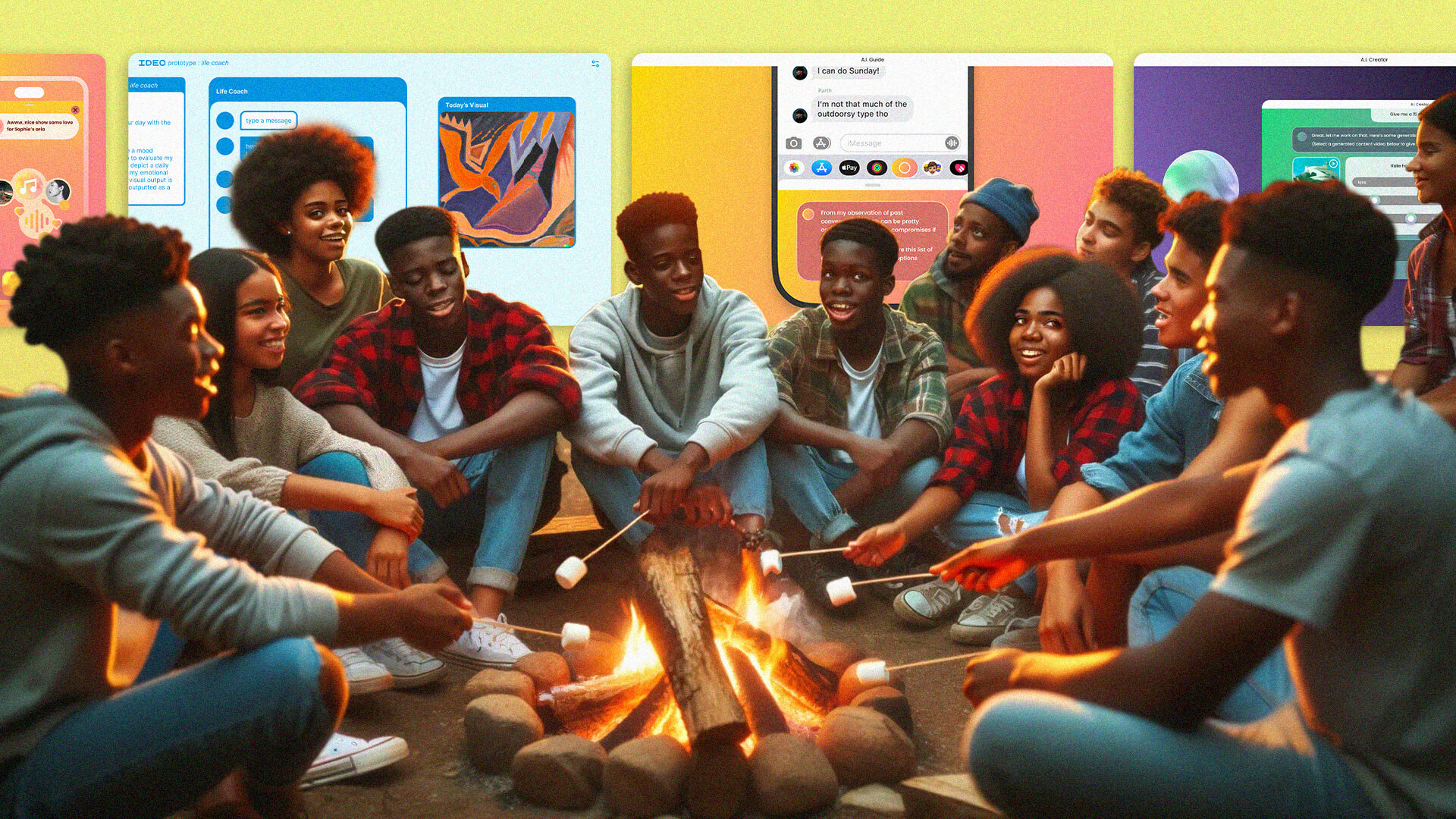When AI Enters the Group Chat

Many of Gen Z’s friendships and much of their relationship development happens online—on social media, online gaming platforms, and in community spaces and group chats. These are also the kinds of spaces where AI is appearing in the form of new tools and personal assistants. But having AI show up on platforms Gen Z considers safe spaces can be problematic.
In the first phase of our research testing the edges of AI products with a group of Gen Zs, they laid out three principles to help guide us in our designs: Skip the engineered reality; elevate human intuition and empathy; and build in transparency. This time around, we made those principles tangible, by prototyping various expressions of AI personal assistants, and asking our Gen Z partners to test them out in the context of their own lives.
We were also testing a hypothesis of our own, based on our work with this cohort: For users to feel they have the freedom to play and engage with AI, we first need to design a strong foundation of psychological safety. We believe that’s key to unlocking social AI experiences that Gen Z will truly want to use.
{{video-1}}
Prototyping Road Trips
Because we’re working with Gen Zs, we created a prototype to help with a real part of their lives—planning a weekend trip with their friends in a group chat. In one version, an AI personality acted as a concierge, pulling together activities and itineraries in a way that was transparent and obvious to everyone in the group. In the other, the AI personality acted as an agent, operating in the background on the user’s behalf, hidden from the group’s view. The agent still pulled travel details together, but only one user could see them. It could also provide advice beyond logistical support—like how to tactfully respond to a friend if there’s a disagreement about which activities to prioritize.
When our Gen Z participants interacted with the Concierge and Agent, they were excited by the idea that AI can unlock more joyful social experiences, but they also voiced deep concerns about privacy, safety, and consent. Our participants reported that AI feels much more invasive than other technologies—more powerful, and with a greater ability to cause harm.
“Having your whole schedule, characteristics, how you live your life—that being stored and potentially sold is a lot more damaging and scary than simply what you’re searching or sites you’re visiting, which is what we experience today,” one high school student said.
{{video-2}}
Taking a bigger leap
We took these insights back to our team, and worked together to weave them into prototypes of new tools for Gen Z group chats. But we wanted to move past incremental change. AI enables new possibilities that haven’t existed before, so it’s important that we take bigger leaps. Instead of creating a souped-up version of the prototype we’d already made with our Concierge and Agent, we brought together perspectives from across IDEO—game designers, toy inventors, play experts, Gen Zs, researchers, and a magician—to imagine and build visions for totally new experiences.
Together, we came up with a concept called AI Playground, a discrete space contained within the group chat that helps make clear what information the AI can see and what its capabilities are. We also made AI Playground opt-in only; no one would see it by default.
What does that look like? Imagine, you’re planning a weekend trip with your friends, and you can conjure your AI assistant into the group chat for a specific task— like generating a curated playlist or building a dynamic itinerary, unique to your friends and to this particular outing. Because there is a clear boundary between the Playground and the group chat, users don’t have to worry that their AI assistant can access everything that they say—it’s up to them what they choose to share. And because all users had to opt-in to join the space, they can feel more comfortable playing around and being themselves—generating GIFs to share an inside joke, creating music to match their mood, and more. Our goal was to enhance their play and increase their agency without intruding on their personal conversations.

A Safe Space to Play
AI Playground is an example of an alternative way we could integrate AI personal assistants in group use cases, one that sets the conditions for trust and play. As we learned in our research with Gen Zs, their friendship and relationship development is a key part of who they are, and they are highly sensitive to technologies that interfere with these bonds. By building safer AI experiences across all spaces and domains, we can unlock a better AI-enabled future for everyone. For more windows into AI prototyping focused on mental health, and how AI might revolutionize the ways Gen Z is preparing for their careers, subscribe to the IDEO newsletter.
Parts of the images in this article were created/altered using generative AI.





Subscribe to the IDEO newsletter
.jpg)






